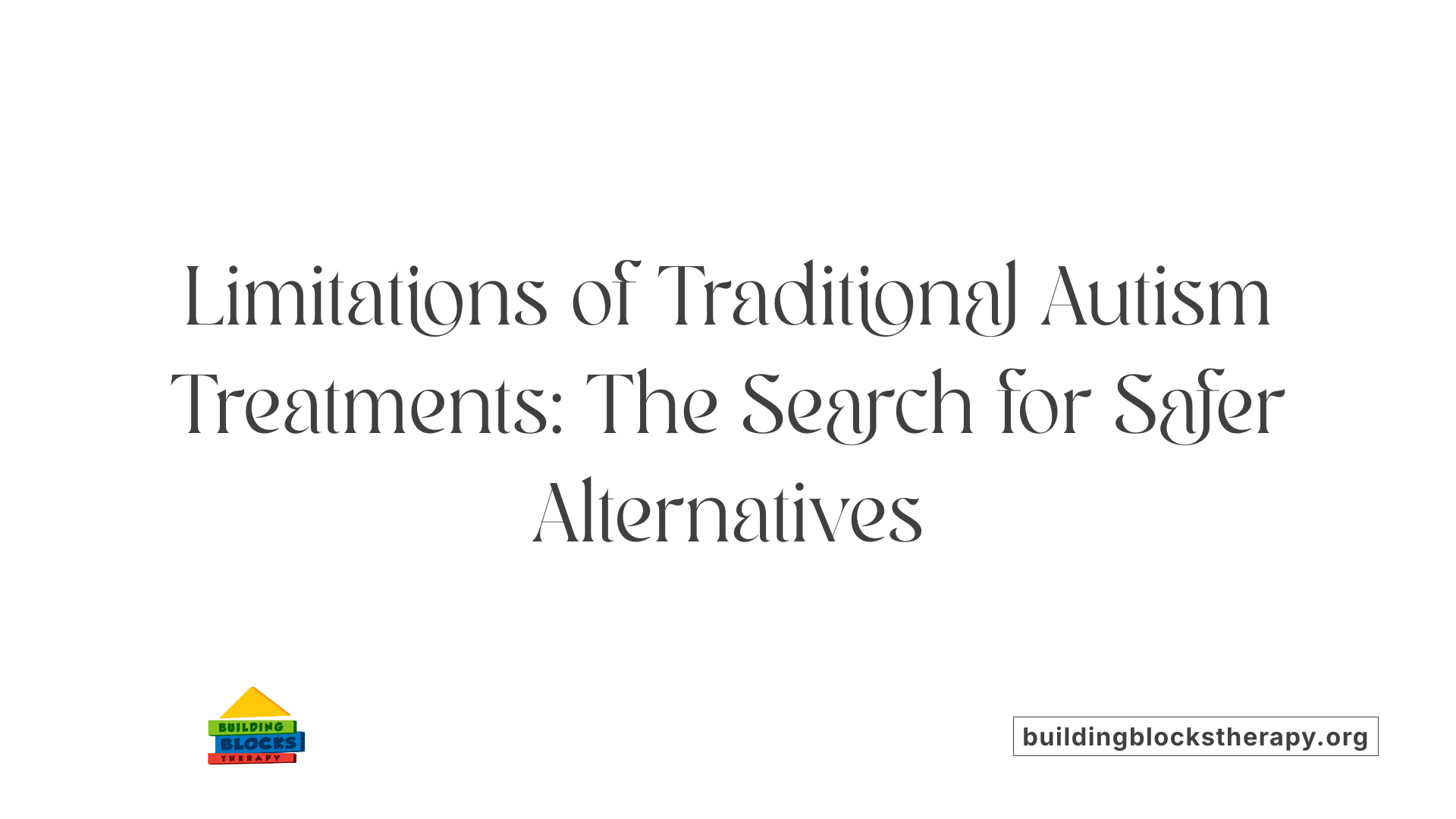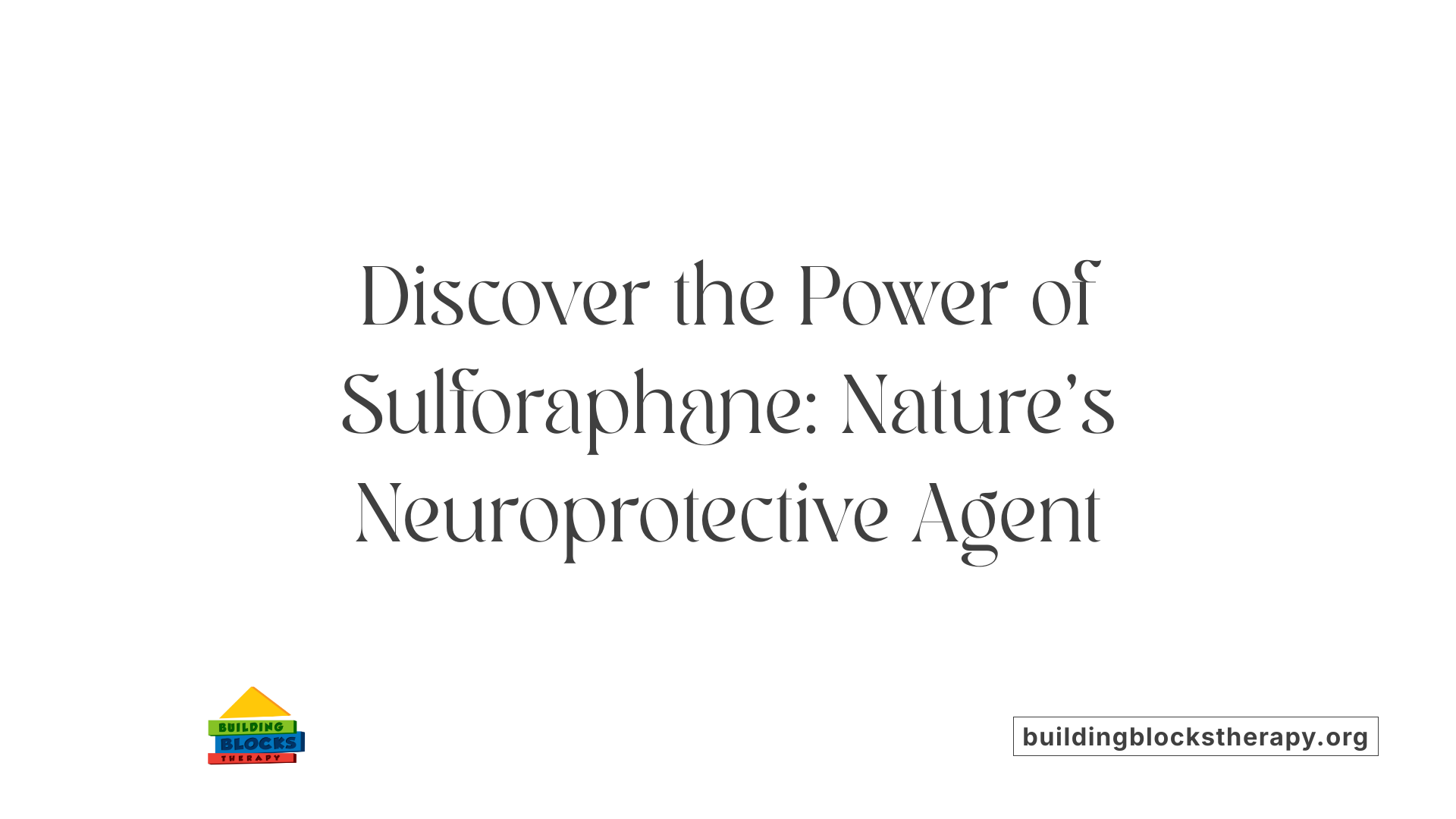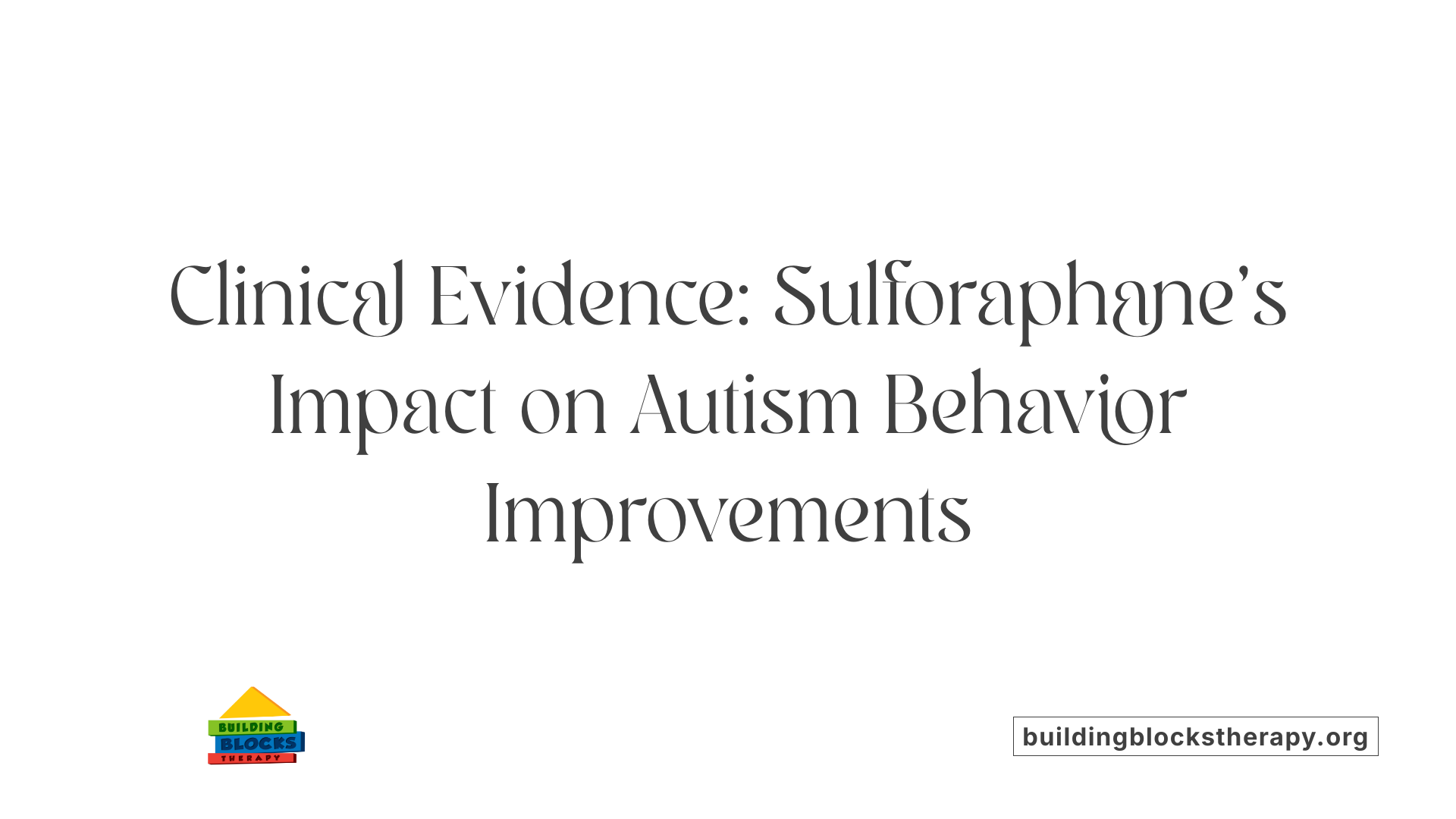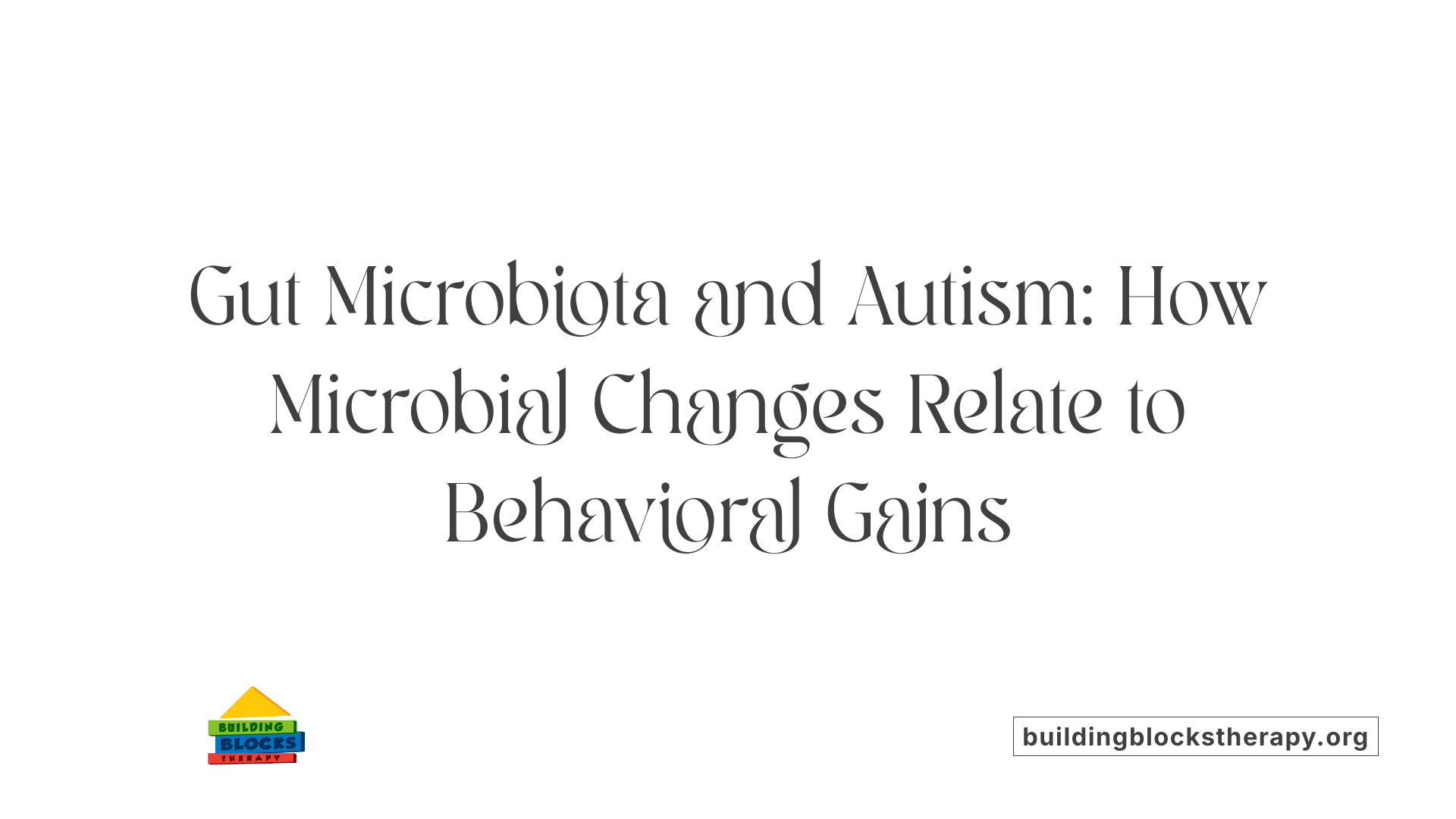Understanding Autism and the Search for Effective Treatments
Autism Spectrum Disorder (ASD) presents complex challenges with core characteristics including social communication difficulties, delayed developmental milestones, and repetitive behaviors. With increasing diagnosis rates worldwide and limited pharmacological options, attention has turned towards complementary approaches. Among promising compounds, sulforaphane (SFN), a natural phytochemical, has gained interest for its potential neuroprotective properties and behavioral benefits in ASD.
Defining Autism Spectrum Disorder and Its Clinical Features
What Are the Core Symptoms of Autism Spectrum Disorder (ASD)?
Autism Spectrum Disorder (ASD) is characterized by challenges primarily in social communication and interaction. Individuals with ASD often experience delayed developmental milestones, difficulties in social functioning, and engage in repetitive behaviors. These core symptoms can vary widely in severity and presentation, leading to the diverse spectrum seen in clinical practice.
How Have Diagnosis Rates for ASD Changed Recently?
Diagnosis rates for ASD have risen notably over the years. In the United States, the Centers for Disease Control and Prevention (CDC) reports that approximately 1 in 59 children are diagnosed with ASD. This upward trend reflects increased awareness, improved diagnostic criteria, and possibly broader definitions.
What Is Therapy Focusing on Autism and Behavioral Analysis?
One main therapeutic approach for ASD is Applied Behavior Analysis (ABA). ABA is a scientifically validated method that uses learning principles to help individuals develop skills and reduce challenging behaviors. It incorporates positive reinforcement, prompting, and behavior chaining to improve areas such as communication, social skills, self-care, and academic performance. Customized treatment plans, overseen by trained professionals, ensure progress is monitored through data collection and ongoing assessments.
Current Conventional Treatments and Their Limitations

What FDA-approved treatments exist for ASD?
Currently, there are no FDA-approved treatments specifically targeting Autism Spectrum Disorder (ASD) itself. Medical interventions mostly focus on managing particular behavioral symptoms rather than addressing core developmental features of ASD.
What pharmacological interventions are used, and what are their side effects?
Pharmacological treatments for ASD often include medications aimed at alleviating specific behaviors such as irritability, hyperactivity, or repetitive actions. These medications, however, have limited long-term efficacy data and may lead to side effects like sedation, weight gain, or metabolic issues. The challenge with these medications is that they do not provide comprehensive improvement in social communication or cognitive functions, and their benefit-risk profile requires careful consideration.
Why do many families seek complementary and alternative medicine (CAM)?
Due to concerns about the potential adverse effects and limited effectiveness of conventional medications, many families turn to complementary and alternative medicine approaches. CAM therapies offer a more natural or holistic option that some parents find preferable. These approaches may include dietary supplements, behavioral therapies, and natural compounds, with an increasing interest in agents like sulforaphane derived from cruciferous vegetables.
This shift towards CAM reflects a desire for safer, well-tolerated interventions that could improve the quality of life for individuals with ASD without the drawbacks associated with pharmacological treatments.
Introduction to Sulforaphane: A Natural Phytochemical

What is the source and biological properties of sulforaphane?
Sulforaphane (SFN) is a natural phytochemical found predominantly in cruciferous vegetables such as broccoli, Brussels sprouts, and cabbage, with broccoli sprouts having particularly high concentrations. It is known for its strong antioxidant capabilities, which enable it to combat oxidative stress—an imbalance between the production of harmful free radicals and the body's ability to neutralize them.
SFN exerts a variety of beneficial biological effects. It activates the Nrf2 signaling pathway, a critical regulator of cellular defense mechanisms that promotes the production of protective enzymes and molecules like glutathione. This activation helps cells defend against oxidative damage, inflammation, and DNA damage.
What are the neuroprotective and antioxidant effects of sulforaphane?
The neuroprotective properties of sulforaphane are attributed to its ability to cross the blood-brain barrier, allowing it to directly impact the central nervous system. In doing so, it reduces oxidative stress and inflammation within neural tissues, which are factors commonly implicated in neurodevelopmental disorders.
By enhancing antioxidant defenses and modulating immune responses, SFN helps maintain mitochondrial function and synaptic health—mechanisms essential for healthy brain development and function. These protective effects support sulforaphane's potential roles in mitigating neurological impairments such as those observed in Autism Spectrum Disorder (ASD).
Overall, sulforaphane’s natural origin combined with its ability to induce powerful antioxidant and anti-inflammatory responses makes it a promising candidate for supporting brain health and addressing neurodevelopmental challenges through non-pharmacological means.
Biological Rationale for Using Sulforaphane in Autism Treatment
Oxidative Stress Regulation
Sulforaphane (SFN) is known for its strong antioxidant properties that play a central role in managing oxidative stress, a condition characterized by excessive free radicals damaging cells. In individuals with Autism Spectrum Disorder (ASD), oxidative stress is often elevated, contributing to cellular and neurological abnormalities. SFN activates the Nrf2 pathway, which upregulates genes responsible for enhancing antioxidant defenses, including glutathione production. This helps protect brain cells from oxidative damage, which is a common feature in ASD.
Mitochondrial Dysfunction
Mitochondria, the energy powerhouses of cells, often function abnormally in ASD, leading to disrupted energy metabolism within neurons. SFN’s biological activities include supporting mitochondrial health by reducing oxidative damage and promoting efficient energy production. Enhanced mitochondrial function may improve neuronal communication and overall brain function, addressing some core deficits found in ASD.
Immune Dysregulation and Neuroinflammation
Immune system abnormalities and chronic neuroinflammation are frequently reported in ASD, contributing to behavioral and cognitive challenges. SFN exhibits anti-inflammatory effects by modulating immune responses and reducing the production of inflammatory cytokines. By tempering neuroinflammation, SFN may help normalize brain function and reduce autism-related symptoms.
Synaptic Function
Proper synaptic function is critical for brain connectivity and communication between neurons, processes often impaired in ASD. SFN’s neuroprotective effects support synaptic health by regulating oxidative stress and inflammation, which in turn may improve synaptic signaling and plasticity. This leads to potential enhancements in social behaviors and cognitive functions observed in ASD.
Overall, the ability of sulforaphane to target these intertwined biochemical and molecular pathways—oxidative stress, mitochondrial dysfunction, immune dysregulation, and synaptic abnormalities—provides a strong biological rationale for its therapeutic potential in treating autism spectrum disorder.
Clinical Trial Evidence: Behavioral Improvements with Sulforaphane

What do randomized controlled trials reveal about sulforaphane's impact on ASD?
Randomized, double-blind, placebo-controlled clinical trials have provided robust evidence on the benefits of sulforaphane (SFN) for individuals with Autism Spectrum Disorder (ASD). One notable study administered SFN, derived from broccoli sprouts, orally to young men with ASD and documented significant behavioral improvements compared to placebo. These trials have validated SFN's potential by showing measurable positive changes in core behavioral symptoms of ASD.
How does sulforaphane affect scores on the Aberrant Behavior Checklist and Social Responsiveness Scale?
Clinical trials consistently report that SFN significantly decreases scores on the Aberrant Behavior Checklist (ABC) and the Social Responsiveness Scale (SRS), two widely used assessments for behavioral symptoms in ASD. For example, after 18 weeks of treatment, SFN recipients exhibited a 34% reduction in ABC scores, reflecting decreased irritability and hyperactivity. The SRS scores declined by about 17%, indicating improved social communication and reduced social impairments.
What improvements are observed on the Clinical Global Impression Improvement Scale?
The Clinical Global Impression Improvement Scale (CGI-I), which gauges overall clinical improvement, also showed significant gains in participants treated with sulforaphane. This scale corroborates the behavioral assessment data, confirming that SFN produces tangible, noticeable improvements in functioning and symptom severity in individuals with ASD.
Collectively, these trial outcomes highlight that sulforaphane has a reproducible and meaningful positive effect on behavioral domains central to Autism Spectrum Disorder. The significant reductions in ABC and SRS scores alongside better CGI-I ratings suggest that SFN may represent a promising adjunctive treatment option for managing ASD symptoms with a favorable safety profile.
Quantitative Outcomes from Sulforaphane Treatment Studies
What was the percentage reduction in ABC and SRS scores after sulforaphane treatment?
In a randomized, double-blind, placebo-controlled trial involving young men with Autism Spectrum Disorder (ASD), sulforaphane (SFN) treatment led to a notable 34% reduction in the Aberrant Behavior Checklist (ABC) scores, which measure behavioral problems. Concurrently, the Social Responsiveness Scale (SRS) scores, assessing social deficits in ASD patients, showed a 17% decline. These improvements highlight significant positive behavior changes following SFN administration.
Over what timeframe were these behavioral improvements observed?
The trial spanned 18 weeks of oral sulforaphane supplementation. Behavioral assessments indicated progressive improvements within this period, with both the ABC and SRS scores showing sustained declines by the end of the 18-week treatment phase. Additionally, other clinical scales, such as the Clinical Global Impression Improvement Scale (CGI-I), corroborated these beneficial outcomes during the treatment window.
Are the behavioral effects of sulforaphane reversible after stopping treatment?
Yes, behavioral improvements appear to be linked directly to ongoing sulforaphane administration. The study reported that following discontinuation of SFN, scores on behavioral assessments gradually reverted toward baseline levels. This reversibility suggests the need for continuous treatment to maintain the positive outcomes and indicates that SFN’s effects are not permanent post-cessation but require sustained dosing.
Safety Profile and Side Effects of Sulforaphane in ASD Studies
What minor side effects have been recorded with sulforaphane use?
Studies involving sulforaphane (SFN) treatment in individuals with Autism Spectrum Disorder (ASD) reported only mild side effects. These included insomnia, flatulence, constipation, mild allergic reactions, vomiting, and irritability in a small number of participants. No serious adverse events have been documented across multiple clinical trials, reflecting a mostly benign side effect profile.
How well is sulforaphane tolerated overall?
Sulforaphane has demonstrated strong overall tolerability in ASD clinical research. Participants typically tolerated oral SFN supplementation with negligible toxicity. Behavioral improvements were observed without significant compromise to safety, and adverse effects were transient and resolved without intervention. This high tolerability supports SFN's potential as a long-term complementary treatment option.
How does sulforaphane's safety compare to pharmacological treatments?
Unlike many pharmacological interventions for ASD, which often carry risks of significant side effects and have limited long-term safety data, sulforaphane offers a safer alternative with fewer and less severe side effects. The natural origin of SFN and its minimal adverse event profile contrast with the concerns families have regarding medication side effects, encouraging consideration of SFN as a complementary therapy.
Sulforaphane's favorable safety profile, combined with its demonstrated benefits, positions it as a promising candidate for integration into ASD management strategies, potentially improving quality of life with minimal risk.
Gut Microbiota and Autism: Linking Sulforaphane to Microbial Modulation
How is the gut microbiota altered in individuals with ASD?
Research has consistently shown that individuals with Autism Spectrum Disorder (ASD) exhibit distinct differences in gut microbiota compared to healthy controls. Notably, there is a reduction in bacterial diversity with lower abundance of beneficial taxa. For example, bacteria such as Bacteroides, Bifidobacterium, and Staphylococcus (including family Staphylococcaceae and order Bacillales) are found at diminished levels in ASD patients. These microbial imbalances have been correlated with symptom severity, with some taxa linking directly to social and behavioral measures.
What effects does sulforaphane have on gut microbial composition?
Sulforaphane (SFN), a natural compound from broccoli sprouts, has been shown in clinical and animal studies to modulate gut microbiota favorably in ASD contexts. Treatment with SFN increases the abundance of beneficial bacteria such as Lactobacillus, Prevotella, and Bifidobacterium. In ASD-like rodent models, SFN shifted the microbial community by enhancing Bacteroidetes and Actinobacteria phyla and raising certain genera tied to improved social behavior. Similarly, in children with ASD, supplementation with SFN is associated with increased diversity and beneficial bacterial populations.
Which key microbial taxa are implicated in SFN's therapeutic benefits for ASD?
Network analyses in both ASD-like rats and affected children highlight specific microbial groups linked to behavioral improvements after SFN treatment. Prevotella, Haemophilus, and the Pasteurellaceae family stand out as important taxa correlated with social behavior and symptom reduction. Additionally, depletion of Staphylococcus-related taxa common to ASD patients and animal models might serve as microbial markers or therapeutic targets. Overall, these findings suggest that SFN's positive effects on ASD symptoms may be partially mediated by restoring healthy gut microbiota balance.
This emerging link between sulforaphane and gut microbiota modulation offers a promising avenue for understanding and potentially treating ASD through microbiome-targeted strategies.
Preclinical Studies: Animal Models Supporting Sulforaphane's Benefits
How does sulforaphane affect social behavior in ASD animal models?
Preclinical studies using maternal immune activation (MIA) rat models of Autism Spectrum Disorder have provided valuable insights into sulforaphane's potential therapeutic effects. In these ASD-like rats, sulforaphane treatment significantly improved social behavior. This improvement was evident in increased sniffing durations during the three-chamber social interaction tests, a widely accepted measure of social engagement in rodent models of autism.
What microbiota changes have been observed in ASD rat models with sulforaphane treatment?
Research has also highlighted notable changes in the gut microbiota composition of ASD-like rats treated with sulforaphane. Specifically, there was an increase in the relative abundance of bacterial groups such as Bacteroidetes and Actinobacteria. At the genus level, sulforaphane promoted the growth of beneficial bacteria including Lactobacillus and Prevotella. These microbial shifts are associated with behavioral improvements, suggesting a microbiota-mediated mechanism for sulforaphane’s effects.
Why are these findings significant?
These preclinical findings are crucial as they support the biological rationale for sulforaphane's use in ASD by demonstrating not only behavioral rescue but also modulation of gut microbiota. The gut-brain axis is increasingly recognized as a key player in ASD pathology, and sulforaphane’s ability to positively influence this axis opens new avenues for treatment development. The animal model data therefore provide foundational evidence for complementary clinical trials and ongoing research.
Microbial Taxa Correlations with Behavioral Improvements

Prevotella, Haemophilus, and Lactobacillus Associations
Studies of both ASD-like rat models and children with autism spectrum disorder have identified changes in specific gut bacteria linked to behavioral outcomes. Notably, the genera Prevotella, Haemophilus, and Lactobacillus have been observed to increase following sulforaphane (SFN) treatment. These bacterial taxa are associated with improvements in social behavior and core autism symptoms such as communication and social responsiveness.
Microbiota-Behavior Network Analyses
Network analyses integrating microbial composition data and behavioral measures have revealed significant correlations between certain bacteria and symptom improvements. For instance, elevated levels of Prevotella and Haemophilus correlate with better social scores in both animal and human studies. This evidence suggests that these microbes may play a role in mediating the positive effects of SFN on ASD-related behaviors.
Potential Microbial Biomarkers
Several microbial taxa consistently decreased in ASD subjects compared to controls have emerged as potential biomarkers for diagnosis or targets for intervention. These include bacteria from the order Bacillales, family Staphylococcaceae, and genus Staphylococcus. The observed restoration or modulation of beneficial microbes like Bifidobacterium and Lactobacillus with SFN treatment supports their importance in ASD pathophysiology and therapeutic response.
Together, these findings highlight a promising link between gut microbiota composition and behavioral health in ASD, suggesting that SFN’s benefits may, in part, be driven by its ability to modulate the microbiome.
Complementary and Alternative Medicine (CAM) in Autism Therapy
Why Do Families Seek Complementary and Alternative Medicine?
Many families of children with Autism Spectrum Disorder (ASD) pursue complementary and alternative medicine (CAM) due to concerns over potential side effects of conventional pharmacological treatments, which often target specific behaviors but lack extensive long-term safety data. The absence of FDA-approved treatments for core ASD symptoms leaves caregivers eager to explore other options that might provide behavioral or cognitive improvements with fewer risks.
Sulforaphane's Emerging Role in CAM for Autism
Among various CAM interventions, sulforaphane (SFN), a natural compound found in cruciferous vegetables like broccoli sprouts, has gained noteworthy attention. Research indicates that SFN may offer neuroprotective effects through its antioxidant properties and ability to regulate oxidative stress, immune dysregulation, and mitochondrial dysfunction—biochemical pathways implicated in ASD.
Clinical trials, including randomized controlled studies, have demonstrated significant positive effects of SFN on behavioral assessments such as the Aberrant Behavior Checklist (ABC) and the Social Responsiveness Scale (SRS). For example, after 18 weeks of sulforaphane treatment, participants showed a 34% reduction in ABC scores and a 17% reduction in SRS scores.
SFN has been well tolerated with minimal side effects reported, including mild insomnia or gastrointestinal symptoms, supporting its potential safety in ongoing treatment.
Integration of Sulforaphane with Behavioral Therapies
Even as sulforaphane shows promise, behavioral therapies, particularly Applied Behavior Analysis (ABA), remain a cornerstone in autism treatment. ABA is provided by professionals with specialized training and certification, such as Board Certified Behavior Analysts (BCBAs), who use evidence-based techniques like positive reinforcement to improve social, communication, and adaptive skills.
Sulforaphane may complement these therapies by targeting underlying biochemical abnormalities, potentially enhancing overall outcomes. Its capacity to modulate gut microbiota could further support behavioral improvements, offering a novel angle for integrative treatment approaches.
Continued research is essential to establish the best practices for combining SFN supplementation with standard behavioral interventions to maximize benefits for individuals with ASD.
Integrating Sulforaphane with Established Behavioral Therapies
What are the potential complementary benefits of sulforaphane with behavioral therapies?
Sulforaphane (SFN), derived from broccoli sprouts, has demonstrated significant improvements in behavioral and cognitive functions among individuals with Autism Spectrum Disorder (ASD). These improvements, such as reductions in irritability and hyperactivity measured by the Aberrant Behavior Checklist (ABC) and enhancements in social responsiveness via the Social Responsiveness Scale (SRS), suggest that SFN can complement traditional behavioral therapies.
Behavioral interventions such as Applied Behavior Analysis (ABA) focus on improving social, communication, and adaptive skills through structured and repetitive learning techniques. SFN's biological effects—including modulation of oxidative stress, neuroinflammation, and mitochondrial dysfunction—might address underlying biochemical abnormalities that behavioral therapies do not target directly. Thus, SFN can provide a physiological foundation that supports improved engagement and responsiveness to behavioral treatments.
How does sulforaphane mechanistically synergize with ABA approaches?
ABA works primarily by shaping behavior through reinforcement strategies. The success of ABA greatly depends on the individual's ability to learn and process social cues. SFN's neuroprotective and antioxidant properties, via mechanisms like activation of the Nrf2 pathway and elevation of glutathione levels, may help restore neural circuits involved in social communication and reduce inflammation-mediated cognitive deficits.
Moreover, SFN’s modulation of gut microbiota—resulting in an increase of beneficial bacteria such as Lactobacillus and Prevotella—can influence the gut-brain axis, potentially enhancing neurobehavioral outcomes. This gut microbiome restoration may improve mood and social engagement, which are crucial for effective ABA therapy sessions.
Why is multidisciplinary care important when combining SFN and behavioral therapies?
Given the complex nature of ASD, integrating SFN supplementation with established behavioral therapies calls for a multidisciplinary approach. Coordination among neurologists, psychologists, dietitians, and therapists ensures that SFN administration is monitored for safety and efficacy while behavioral interventions are tailored to individual progress.
Close monitoring helps manage the possible mild side effects of SFN such as insomnia or gastrointestinal changes alongside behavioral goals. Furthermore, combining pharmacological insights and therapy strategies supports comprehensive care plans that maximize benefits while minimizing risks.
In summary, the integration of SFN with ABA and other behavioral therapies holds promise in providing holistic treatment by addressing both molecular and behavioral facets of ASD, underscoring the importance of multidisciplinary collaboration for optimal outcomes.
Molecular Pathways and Gene Regulation by Sulforaphane in ASD
How does sulforaphane activate the Nrf2 pathway?
Sulforaphane (SFN) is known for its potent activation of the Nrf2 (nuclear factor erythroid 2–related factor 2) pathway, a critical regulator of cellular defense mechanisms. Upon SFN exposure, Nrf2 dissociates from its inhibitor Keap1 and translocates into the nucleus where it binds to antioxidant response elements (ARE) in the DNA. This binding initiates the transcription of a suite of cytoprotective genes that enhance antioxidant capacity and detoxification processes.
Which protective genes are upregulated by sulforaphane?
SFN upregulates genes involved in antioxidant defenses, such as heme oxygenase-1 (HO-1), glutathione S-transferases (GST), and enzymes synthesizing glutathione, a major intracellular antioxidant. This genetic upregulation boosts the cellular ability to neutralize reactive oxygen species (ROS), which are elevated in individuals with ASD due to oxidative stress-related biochemical abnormalities.
What are SFN's effects on DNA damage and inflammation?
Sulforaphane also modulates genes related to DNA repair and inflammation reduction. It reduces oxidative DNA damage by enhancing repair mechanisms and limits neuroinflammation through downregulation of pro-inflammatory cytokines. This dual action is crucial because oxidative stress and neuroinflammation are hallmark features of ASD pathology, contributing to synaptic dysfunction and behavioral impairments.
In summary, SFN’s molecular influence centers on activating the Nrf2 pathway to upregulate protective genes that combat oxidative stress, enhance DNA repair, and temper inflammation. These coordinated effects form the biological rationale for using sulforaphane as a therapeutic approach aiming to address core biochemical disruptions in ASD.
Meta-Analysis and Systematic Reviews of Sulforaphane in ASD
What Evidence Exists for Sulforaphane's Effect on Irritability and Hyperactivity in ASD?
Recent meta-analyses evaluating sulforaphane (SFN) treatment in Autism Spectrum Disorder (ASD) reveal significant reductions in irritability and hyperactivity, two common behavioral challenges in ASD. By synthesizing data from multiple clinical trials, these reviews confirm that SFN consistently improves behavioral symptoms measured via the Aberrant Behavior Checklist (ABC) and the Social Responsiveness Scale (SRS).
How Rigorous is the Study Methodology in These Meta-Analyses?
The systematic reviews employed comprehensive database searches, including randomized controlled trials and open-label studies, alongside rigorous bias assessment tools. This approach ensured high-quality evidence by evaluating trial designs, sample sizes, and outcome measures. The detailed methodology strengthens the reliability of conclusions about SFN’s effectiveness and safety profile.
What Are the Clinical Implications of These Findings?
Given the demonstrated safety and behavioral benefits, sulforaphane emerges as a promising adjunct treatment option for ASD. Its potential to target core symptoms like irritability and hyperactivity without serious side effects suggests it may complement existing therapies. However, the reversibility of improvements post-treatment underscores the need for ongoing SFN administration to maintain benefits. Future clinical protocols could integrate SFN to address biochemical abnormalities such as oxidative stress and inflammation alongside behavioral support.
Challenges and Future Directions in Sulforaphane Research for Autism
What are the challenges with long-term efficacy and safety of sulforaphane in ASD?
Though multiple studies confirm that sulforaphane (SFN) is generally safe with minimal side effects such as mild insomnia and mild allergic reactions, long-term data on its use in ASD treatment are still lacking. Behavioral improvements have been shown to revert back toward baseline following discontinuation of SFN, indicating that continuous treatment might be necessary for sustained effects. However, extended use raises questions about long-term safety, potential cumulative side effects, and practicality that future research must address.
How can dosing of sulforaphane be optimized?
Current clinical trials have utilized various dosing regimens of SFN, but an optimal dose that maximizes efficacy while minimizing side effects has yet to be firmly established. Differences in individual metabolism, age, severity of ASD symptoms, and dietary factors may influence how patients respond to SFN. Therefore, future studies should focus on refining dosing protocols, exploring dose-response relationships, and tailoring administration strategies to specific patient subgroups.
Why are larger scale clinical trials necessary?
Existing clinical investigations often involve relatively small samples, limiting the generalizability of results. Although randomized controlled trials have demonstrated promising behavioral and cognitive improvements measured by scales like the Aberrant Behavior Checklist (ABC) and the Social Responsiveness Scale (SRS), larger randomized, placebo-controlled studies are essential to confirm these benefits. They would also enable subgroup analyses, assess long-term outcomes, and further evaluate the safety profile across diverse populations.
Together, addressing these challenges through well-designed, large-scale clinical research will be vital in validating SFN as a potential treatment option for ASD. Optimizing dosing, ensuring sustained efficacy, and confirming safety over extended periods will guide its integration into therapeutic protocols, possibly in combination with other interventions targeting core biochemical abnormalities and gut microbiota modulation.
Potential Microbiota Biomarkers and Targets for ASD Therapy
Which microbial taxa are decreased in ASD and why are they important?
Studies indicate that several microbial taxa, including the order Bacillales, family Staphylococcaceae, and genus Staphylococcus, are decreased in both children with Autism Spectrum Disorder (ASD) and ASD-like rat models. These decreases are noteworthy because such bacteria play roles in maintaining gut homeostasis and immune balance, aspects often disrupted in ASD.
How are Staphylococcus and Bacillales considered markers in ASD?
The consistent reduction of Staphylococcus-related taxa in ASD suggests their potential as microbial biomarkers. These bacteria’s diminished presence correlates with behavioral deficits, pointing to their value in diagnosing or monitoring ASD progression. Their identification offers a microbial signature that may help differentiate ASD-related gut microbiota profiles from those of neurotypical individuals.
What are the therapeutic implications of these findings?
These microbial alterations open avenues for microbiota-targeted therapies. Sulforaphane (SFN), a natural compound with antioxidant and neuroprotective properties, has been shown to modulate gut microbiota composition positively. Its administration increases beneficial genera like Lactobacillus and Prevotella while potentially restoring the balance of reduced taxa such as Staphylococcus. Thus, SFN might mitigate ASD symptoms partly by correcting gut microbial imbalances, highlighting microbiota manipulation as a promising adjunctive strategy in ASD treatment.
Role of Antioxidants and Neuroprotection in Autism Care

How Does Oxidative Stress Contribute to Autism Spectrum Disorder?
Oxidative stress, an imbalance between free radicals and antioxidants in the body, plays a significant role in the development of Autism Spectrum Disorder (ASD). This imbalance can damage cells and negatively impact brain function, contributing to neuroinflammation, mitochondrial dysfunction, and synaptic abnormalities observed in individuals with ASD.
How Do Antioxidants Like Sulforaphane Support Brain Health?
Sulforaphane (SFN), a natural antioxidant found in cruciferous vegetables such as broccoli sprouts, has shown promising neuroprotective effects relevant to ASD. It penetrates the central nervous system and activates pathways like Nrf2, which boost the cell’s own detoxifying mechanisms. SFN enhances glutathione levels, a major antioxidant in the brain, thus reducing oxidative damage. It also modulates immune responses and helps correct mitochondrial dysfunction and synaptic deficits that contribute to ASD symptoms.
What Is the Clinical Relevance of Sulforaphane in ASD?
Clinical trials have reported significant behavioral improvements in ASD patients following SFN treatment. For example, reductions in scores on behavioral scales such as the Aberrant Behavior Checklist (ABC) and Social Responsiveness Scale (SRS) indicate enhanced social functioning and reduced irritability. Importantly, SFN’s safety profile is favorable, with only minor side effects reported. These findings support SFN as a promising adjunct therapy aimed at addressing the core biochemical abnormalities in ASD through its antioxidant and neuroprotective actions.
Summary of Sulforaphane’s Therapeutic Potential in Autism
What Are the Clinical Benefits of Sulforaphane in ASD?
Several clinical trials have reported meaningful behavioral improvements in individuals with Autism Spectrum Disorder (ASD) treated with sulforaphane (SFN), a natural compound found in broccoli sprouts. Notably, randomized controlled trials showed reductions in scores on key behavioral measures such as the Aberrant Behavior Checklist (ABC) by up to 34% and the Social Responsiveness Scale (SRS) by 17%. These improvements indicate decreased irritability, hyperactivity, and enhanced social responsiveness. In addition, communication abilities improved as evidenced by increases in OSU-CO scores. Importantly, SFN treatment was well tolerated, with only mild side effects like insomnia or mild allergic reactions reported.
How Does Sulforaphane Work Mechanistically in ASD?
Sulforaphane's therapeutic effects appear to arise from its impact on several biochemical and molecular pathways implicated in ASD. It acts as a potent antioxidant by upregulating genes that combat oxidative stress and protect against inflammation and DNA damage. SFN also modulates neuroinflammation and mitochondrial function, both contributors to ASD pathology. A crucial mechanism is SFN's ability to diffuse into the central nervous system and activate the Nrf2 pathway, boosting glutathione levels and providing neuroprotection. Moreover, emerging evidence highlights SFN’s influence on the gut microbiota, shifting microbial populations such as Lactobacillus, Prevotella, and Bifidobacterium. These changes in gut flora correlate with behavioral improvements, suggesting the microbiome is a mediator of SFN’s benefits.
How Could Sulforaphane Be Integrated Into ASD Treatment?
Given the lack of FDA-approved drugs targeting core ASD symptoms, SFN holds promise as a complementary therapeutic option. It addresses underlying biochemical abnormalities and is supported by rigorous clinical studies demonstrating safety and efficacy. SFN's reversible behavioral improvements suggest ongoing treatment is necessary for sustained effects. Its multifaceted actions, including antioxidant, neuroprotective, and microbiota-modulating benefits, justify exploring SFN in combined therapy strategies. This approach would complement behavioral interventions without adding notable side effects, meeting the needs of families seeking alternatives to pharmacological treatments with adverse risk profiles.
| Aspect | Details | Implications |
|---|---|---|
| Clinical Benefits | 34% ABC, 17% SRS score reductions; improved communication | Effective behavioral symptom reduction |
| Mechanisms | Antioxidant, Nrf2 activation, immune modulation, microbiota changes | Targets core ASD biochemical dysfunctions |
| Safety Profile | Mild side effects such as insomnia and flatulence | Favorable for long-term use |
| Treatment Integration | Potential for combined therapy; ongoing administration required | Alternative or complementary treatment option |
Looking Ahead: Sulforaphane's Place in Autism Therapy
Sulforaphane, a natural compound with multifaceted biological effects, represents a promising adjunct in the therapeutic landscape for Autism Spectrum Disorder. Robust clinical trials have demonstrated its capacity to improve core behavioral symptoms safely, alongside potential modulation of gut microbiota and neuroprotective actions. While not a replacement for established behavioral therapies such as Applied Behavior Analysis, sulforaphane’s complementary benefits warrant further large-scale studies to define optimal protocols. Its emerging role offers hope for families seeking effective and well-tolerated interventions to support individuals with autism toward better social functioning and quality of life.
References
- Sulforaphane treatment for autism spectrum disorder
- Sulforaphane treatment of autism spectrum disorder (ASD)
- Therapeutic efficacy of sulforaphane in autism spectrum ...
- Effects of sulforaphane on ABC and SRS scales in patients ...
- Therapeutic efficacy of sulforaphane in autism spectrum ...
- Understanding ABA Therapist Qualifications
- Applied Behavior Analysis (ABA)






